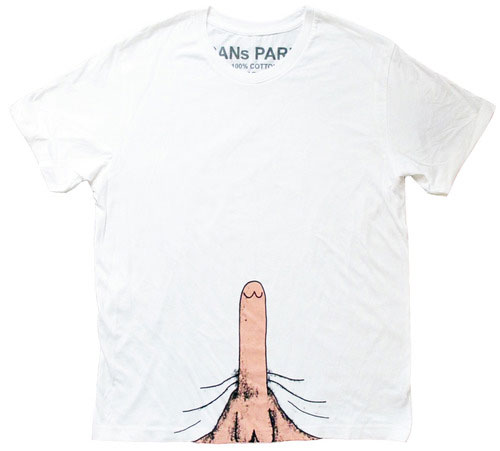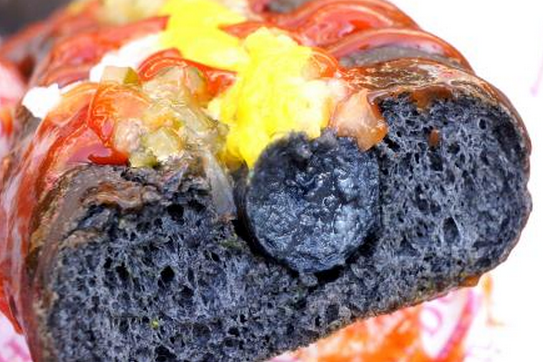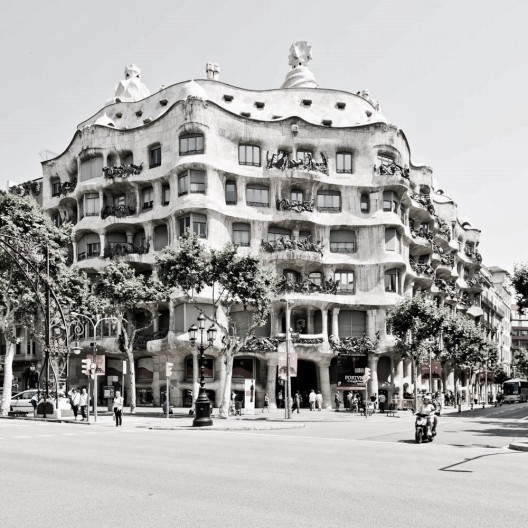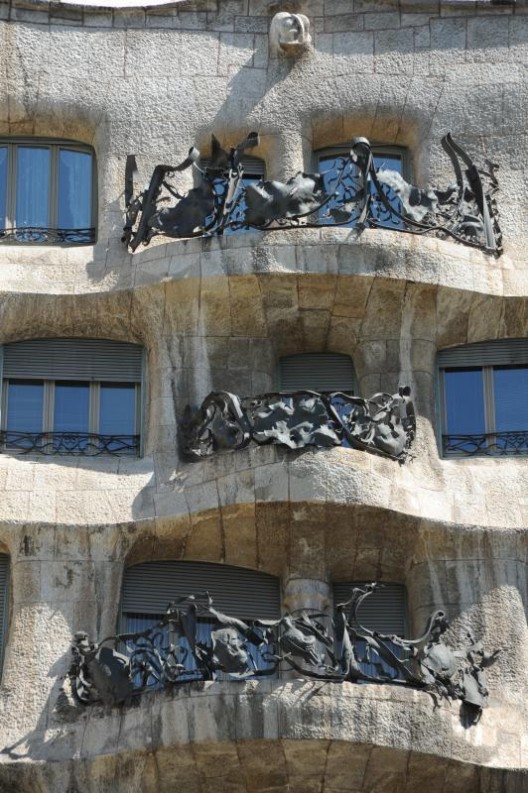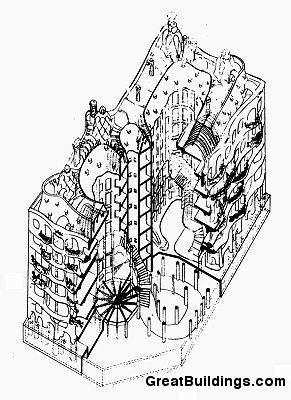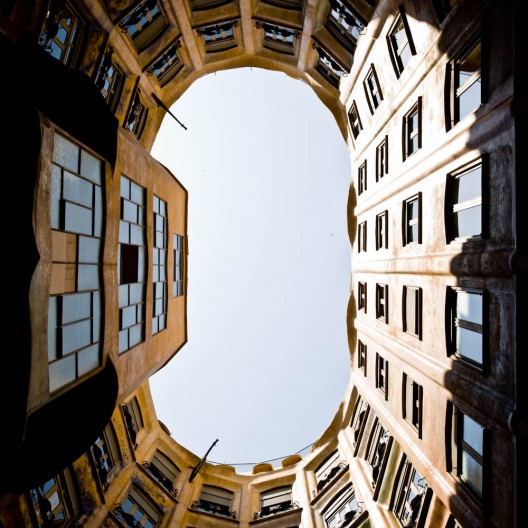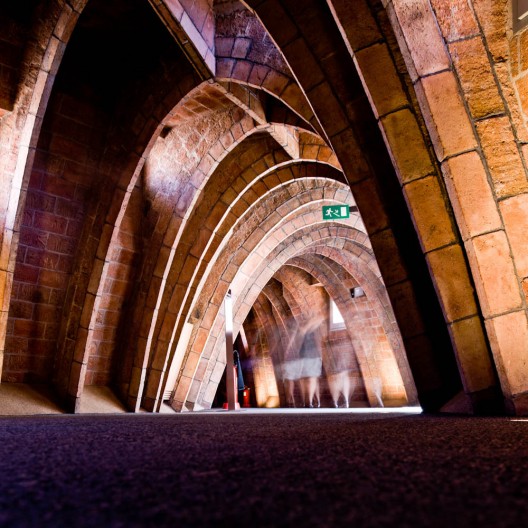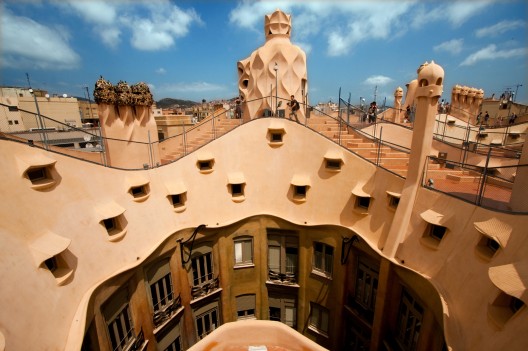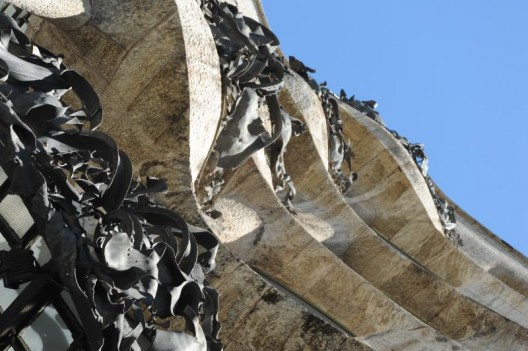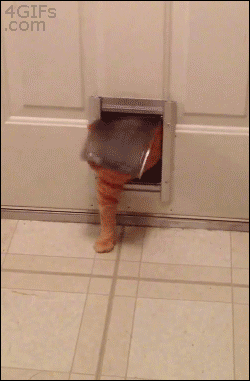
A. Kachmar
Shared posts
Mark Twain
Biggest Virus Yet Found, May Be Fourth Domain of Life?
Tha Alca Volpe car was 135 kilos, two and a...

Tha Alca Volpe car was 135 kilos, two and a half meters in length, only a little over a meter in width and height, and could reach a maximum speed of 75 km/h.
(Want more? See NOTCOT.org and NOTCOT.com)
Headquarters for Santa Fe Architects Association / Gabriel Biagioni, José Giolongo, Javier Mendiondo, Sergio Pecorari, Luis Pessoni, Ramiro Piva

Architects: Gabriel Biagioni, José Giolongo, Javier Mendiondo, Sergio Pecorari, Luis Pessoni, Ramiro Piva
Location: Santa Fe, Argentina
Project Area: 765 sqm
Project Year: 2010
Photographs: Federico Cairoli, Unknown photographer
Collaborators: Moreira, Alejandro; Gonzalez, Martín; Imhoff, Daniel; Condal, Lucas; Pachoud, Pablo Aranda, Virginia; arqs. Gonzalez, Fabio; Surín, Soledad
Site Management: Biagioni, Gabriel; Pessoni, Luis; arqs.
Structures: Botto, Damián; Chiappini, Enrique; Ings.
Client: Colegio de Arquitectos de la Provincia de Santa Fe
Construction: CAM S.A.
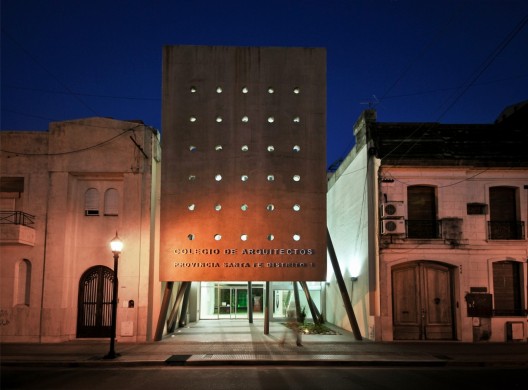
From the architect. The Architects Association must be the home of the architects, a space for them to converge. It must be a meeting place for the different actors involved in our discipline. The architectural space emerges as the cornerstone to generate this convergence.
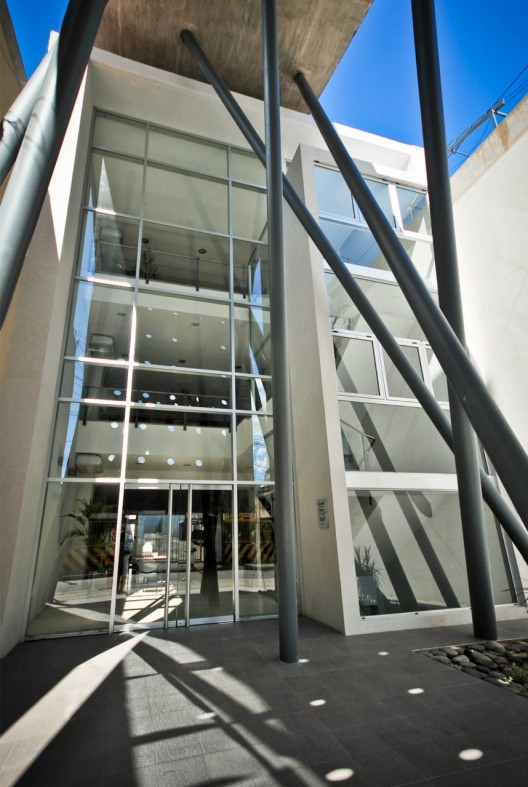
An initial gesture – a folded plane – was transformed into an element that shapes this convergence space. From a site with two facades, this structural element announces, on one hand, the creation of a space inside the building, and on the other, an opening toward the public space of the historic center of Santa Fe. The fold and the space thus become a transition device between architecture and the city. There is a first limit, precise and forceful, a lid that reconstitutes the urban scale, which contains what happens from that point onwards, an autonomous microclimate from its forms, a succession of draining spaces.
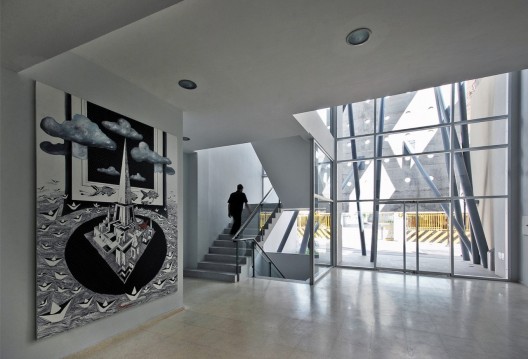
This project participates in the urban event where it is located, as a piece of continuity of the scale of the built fabric, but it also generates a clear rupture from the perceptual, technological, and formal perspectives.

From an environmental perspective, the exposed concrete piece responds to the notion of creating an environmental situation that mitigates the western sun, which in the case of Santa Fe is the orientation with the most extreme climate impact during our hot summers. Besides being the image of the institution, this concrete piece acts as a device that calibrates and manages the incidence of solar rays that are introduced into the building.
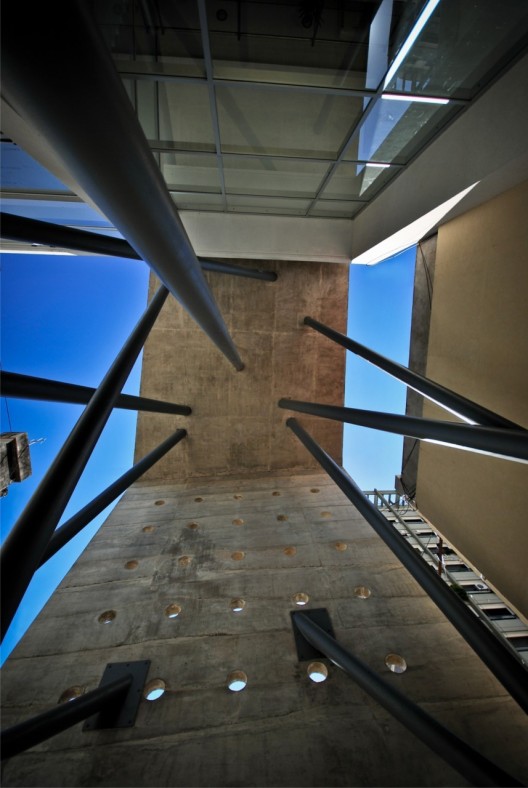
A three-dimensional grid of meeting spaces structures the functional units, respecting a principle of permanent flexibility throughout the building. On the second level, a connection that integrates the new building to the offices of the former headquarters is opened through the party wall. Few materials, solid and strong, give the idea of permanence and timelessness.









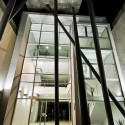
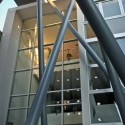



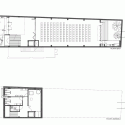


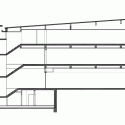

Headquarters for Santa Fe Architects Association / Gabriel Biagioni, José Giolongo, Javier Mendiondo, Sergio Pecorari, Luis Pessoni, Ramiro Piva originally appeared on ArchDaily, the most visited architecture website on 19 Jul 2013.
send to Twitter | Share on Facebook | What do you think about this?
Iranian Living Room - the book PayPal tried to ban
News: here's a slideshow of images of Iranian Living Room, a book of photographs of domestic life in Tehran, which was temporarily blacklisted by online payments company PayPal for having the word "Iranian" in the title (+ slideshow). (more...)
Toolbox on the International Space Station
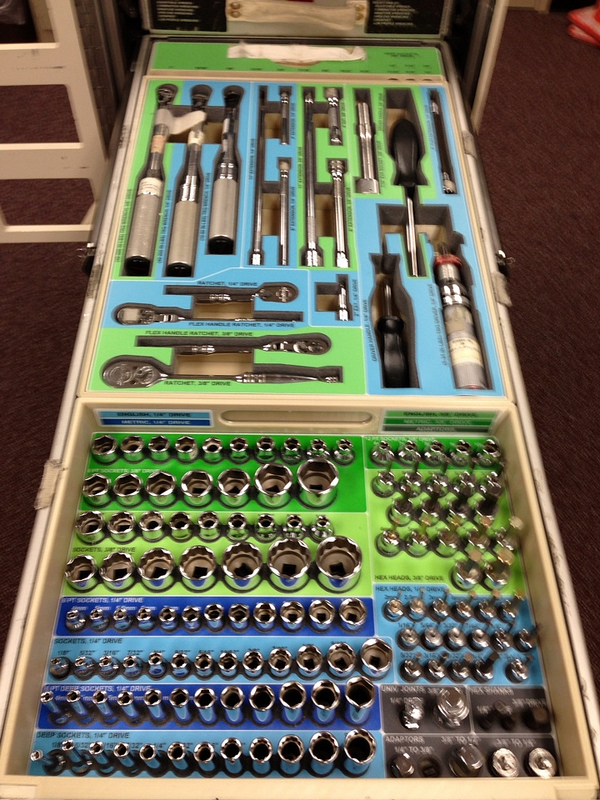
British ISS astronaut Tim Peake has a Flickr gallery of pics of the drawers on an ISS toolchest, each an obsessive, knolled marvel of foam cutouts and the everyday life of a spaceperson.
ISS Toolbox (via Crazy Abalone) ![]()
Trendlet: The Outdoors, Indoors

Sometimes you want to enjoy the pleasures that come with sky and sun, but you don't want to have to actually go outside to do it. This week's group of designers turned our expectations outside in by inviting structures and materials usually slated for the outdoors into the indoors. The results range from droll to downright strange. But perhaps that just means we need to adjust our established outlook.

When the French designer Grégoire de Lafforest took on an 1,100-square-foot Paris loft renovation, he looked to nature for inspiration, placing a dried maritime pine tree adorned with plastic needles in the center of the space. Then he took the idea even further. Around the kitchen, de Lafforest erected a greenhouse constructed from a do-it-yourself kit. This house-within-a-house nicely divides up the space while leaving food preparation both enclosed and exposed.

Residing somewhere between gardening and composting, the installation Final Bloom by the Australian architect and designer Eugene Soler enlists the lopped-off tops of root vegetables as stars in an installation for the British Institute of Interior Design's 2013 conference. Saved from restaurants and friends' kitchens, the veggie caps are placed in shallow pools of water filled by a series of bathroom fixtures (manufactured by the conference's sponsors), where they sprout new growth. The series of containers and the vegetable off-cuts emerging from them look much more like indoor art than kitchen waste.


We Saw the First Ten Minutes of Terry Gilliam's New Masterpiece

Terry Gilliam is the director of science fiction classics Brazil and 12 Monkeys, and he debuted the first ten minutes of his latest weird vision, The Zero Theorem, at Comic-Con this afternoon. It stars Christoph Waltz, looks like a cross between Blade Runner and Sesame Street, and will blow your mind.
Graphene isn’t the only 2D material. Here are a few others that could change material science
Graphene‘s incredible strength, conductivity and flexibility have made it the “it” material of the science world right now. But it is not the only two dimensional material out there. Researchers have experimented combining graphene with other two dimensional materials to overcome one of its intrinsic problems: It can’t be turned “on” and “off” like semiconductors such as silicon. That means it has no control over the flow of electricity, ruling it out in its basic form for use in transistors. Many of the other two dimensional materials have promising applications on their own, which researchers are just now beginning to explore. Here are three super-thin materials that could soon compete with graphene (pictured above) for interest.
- Molybdenum disulfide: When stacked, MDS looks and feels like graphite – one of the 3D forms of graphene. But it is very different from graphene at the two-dimensional level. While graphene is a flat layer of carbon atoms, MDS is composed of molybdenum atoms sandwiched between two sulfur atoms. And unlike graphene, in its natural form it can serve as a semiconductor in transistors, making it appealing for use in electronics and solar cells. Scientists have been experimenting with combining the two materials to allow graphene to have transistor-friendly properties, but are now looking at using MDS on its own. It has properties similar to silicon, but requires the use of much less material and consume less energy.
- Silicene: When silicon is reduced to an atom thick layer, it takes on a slightly squished looking honeycomb structure similar to graphene. Like molybdenum disulfide, it can be used as a transistor in its natural form. It also shares one of graphene’s especially interesting properties: electrons move through it as if they were massless at a very fast pace. This means it conducts electricity faster than any commercially available semiconductor. Because silicon is so ubiquitous in current electronics, silicene could be much easier to adopt than other two dimensional materials. It was only synthesized for the first time last year though, so the research will take some time to mature. It also could turn out to be more difficult to make than graphene.
- Germanane: The element germanium is already used as a semiconductor, and actually formed the very first transistors in the 1940s. When reduced to a single layer of atoms, it forms a material known as germanane. Germanane conducts electrons five times faster than germanium and 10 times faster than silicon, which makes it ideal for creating faster computer chips. It is more stable than silicon and a better absorber and emitter of light. Manufacturers may also be able to produce it on existing equipment in large quantities, which would give it an advantage over emerging graphene manufacturing techniques.
Considering how recently these three materials have captured the attention of scientists, there could be many more two dimensional materials on the way. The next decade will tell whether any wins the title of “the next silicon.”
Related research and analysis from GigaOM Pro:
Subscriber content. Sign up for a free trial.
- The Xbox One’s role in the TV ecosystem
- Retail’s reinvention: technology’s impact on today’s supply chain
- Flash analysis: Xbox One
How Sugar Substitutes Stack Up
Trompe l’oeil, An Inappropriate T-Shirt For Most Occasions
The “trompe l’oeil” shirt designed by New York-based Kalen Hollomon is probably one of the most inappropriate shirts anyone could wear to most any occasion. If you love it like we do, he’s got a whole line of shirts and towels decorated with stylized dicks.
Weight Loss Is Worth Gold In Dubai
Alarmed at ballooning waistlines in a region where fast food is common and comfortable outdoor exercise is not, the local government is offering citizens a gram of gold for each kilogram they lose by Aug. 16.
Fried Chicken and Waffle Sandwich
For his Fried Chicken and Waffle Sandwich, Jonathan of The Candid Appetite blended thick cut bacon, mounds of cheddar cheese, and scallions and added it to his homemade waffle batter. The sandwich uses two of these waffles as the “bread,” freshly fried buttermilk-battered chicken, lettuce, avocadoes, and tomato slices (detailed tutorial and recipe). Oh yes.
photo by The Candid Appetite
via Bon Appétit, The World’s Best Ever
Love Machines, Photos From Inside a Sex Doll Factory
For “Love Machines,” California-based photographer Zackary Canepari went inside Abyss Creations, a factory in San Marcos, California where Real Dolls (described as the “world’s finest Love Doll”) are made. The blog So Bad So Good shares the rest of the photos.
images via DesignTAXI via Zackary Canepari and and Abyss Creations
via So Bad So Good, DesignTAXI
Black Terra, A Long Black Hot Dog Served in Tokyo
Spooky of Oddity Central recently featured the Black Terra, a long charcoal black hot dog served at Vegas Premium Hot-Dogs in Tokyo’s Akihabara district. They report that it’s over 30 cm long and it’s colored with an “edible bamboo charcoal powder.”
images via akibun
via Oddity Central
Medieval Castles Photography

I'm heading over to Great Britain for the Reasons to Be Creative conference in Brighton this September and am looking to make a trek up to Edinburgh to check out some of the amazing medieval castles in the area. Castles arrived in Scotland with the introduction of feudalism in the twelfth century and there have been well over two thousand castles found in all parts of the country.
This upcoming trip and my addiction to Game of Thrones inspired this latest post. We hope you enjoy some of the magnificent photos of castles gathered from Flickr. And if you have any tips for must-see spots to visit please share in the comments section.
Castle P. (AT) - Vienna by Mя.Møпstɛr
Culzean Castle, Ayrshire By Brownie Bear
Castle & Lake by Andrea
Castle Hohenzollern by christophepunkt
Castle De Haar in The Netherlands by Danny Englander
Castle Neuschwanstein by Allen
Castle Fraser by VisitScotland
Burg Eltz -- Eltz Castle by destinatio (very busy)
Chepstow Castle By welshlady
Medieval Castle Butrón - Architecture Gatika, Spain
Castle by Dave Stokes
Lindisfarne Castle, Holy Island by Alan
The Medieval Castle at the Valentino - Turin by Claudio Bizzarri
Medieval castle in Ireland by pljvv
Herstmonceux Castle by Melanie Davies
Limon: a new approach to vibrators. An...

Limon: a new approach to vibrators. An approachable, subtle design enables intuitive squeezable control for something equally well suited to individuals and couples.
(Want more? See NOTCOT.org and NOTCOT.com)
neuromorphogenesis: Gut instincts: The secrets of your second...
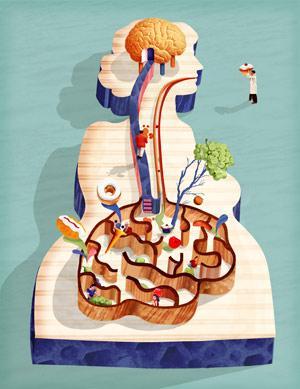
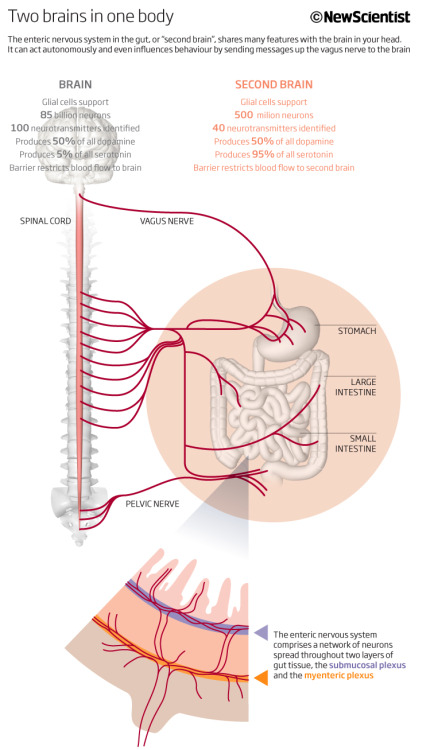
Gut instincts: The secrets of your second brain
When it comes to your moods, decisions and behaviour, the brain in your head is not the only one doing the thinking
Embedded in the wall of the gut, the enteric nervous system (ENS) has long been known to control digestion. Now it seems it also plays an important role in our physical and mental well-being. It can work both independently of and in conjunction with the brain in your head and, although you are not conscious of your gut “thinking”, the ENS helps you sense environmental threats, and then influences your response. “A lot of the information that the gut sends to the brain affects well-being, and doesn’t even come to consciousness,” says Michael Gershon at Columbia-Presbyterian Medical Center, New York.
If you look inside the human body, you can’t fail to notice the brain and its offshoots of nerve cells running along the spinal cord. The ENS, a widely distributed network of neurons spread throughout two layers of gut tissue, is far less obvious, which is why it wasn’t discovered until the mid-19th century. It is part of the autonomic nervous system, the network of peripheral nerves that control visceral functions. It is also the original nervous system, emerging in the first vertebrates over 500 million years ago and becoming more complex as vertebrates evolved - possibly even giving rise to the brain itself.
Digestion is a complicated business, so it makes sense to have a dedicated network of nerves to oversee it. As well as controlling the mechanical mixing of food in the stomach and coordinating muscle contractions to move it through the gut, the ENS also maintains the biochemical environment within different sections of the gut, keeping them at the correct pH and chemical composition needed for digestive enzymes to do their job.
But there is another reason the ENS needs so many neurons: eating is fraught with danger. Like the skin, the gut must stop potentially dangerous invaders, such as bacteria and viruses, from getting inside the body. If a pathogen should cross the gut lining, immune cells in the gut wall secrete inflammatory substances including histamine, which are detected by neurons in the ENS. The gut brain then either triggers diarrhoea or alerts the brain in the head, which may decide to initiate vomiting, or both.
You needn’t be a gastroenterologist to be aware of these gut reactions - or indeed the more subtle feelings in your stomach that accompany emotions such as excitement, fear and stress. For hundreds of years, people have believed that the gut interacts with the brain to influence health and disease. Yet this connection has only been studied over the last century. Two pioneers in this field were American physician Byron Robinson, who in 1907 published The Abdominal and Pelvic Brain, and his contemporary, British physiologist Johannis Langley, who coined the term “enteric nervous system”. Around this time, it also became clear that the ENS can act autonomously, with the discovery that if the main connection with the brain - the vagus nerve - is severed the ENS remains capable of coordinating digestion. Despite these discoveries, interest in the gut brain fell until the 1990s when the field of neurogastroenterology was born.
We now know that the ENS is not just capable of autonomy but also influences the brain. In fact, about 90 per cent of the signals passing along the vagus nerve come not from above, but from the ENS (American Journal of Physiology - Gastrointestinal and Liver Physiology, vol 283, p G1217).
The feel-good factor
The second brain also shares many features with the first. It is made up of various types of neuron, with glial support cells. It has its own version of a blood-brain barrier to keep its physiological environment stable. And it produces a wide range of hormones and around 40 neurotransmitters of the same classes as those found in the brain. In fact, neurons in the gut are thought to generate as much dopamine as those in the head. Intriguingly, about 95 per cent of the serotonin present in the body at any time is in the ENS.
What are these neurotransmitters doing in the gut? In the brain, dopamine is a signalling molecule associated with pleasure and the reward system. It acts as a signalling molecule in the gut too, transmitting messages between neurons that coordinate the contraction of muscles in the colon, for example. Also transmitting signals in the ENS is serotonin - best known as the “feel-good” molecule involved in preventing depression and regulating sleep, appetite and body temperature. But its influence stretches far beyond that. Serotonin produced in the gut gets into the blood, where it is involved in repairing damaged cells in the liver and lungs. It is also important for normal development of the heart, as well as regulating bone density by inhibiting bone formation (Cell, vol 135, p 825).
But what about mood? Obviously the gut brain doesn’t have emotions, but can it influence those that arise in your head? The general consensus is that neurotransmitters produced in the gut cannot get into the brain - although, theoretically, they could enter small regions that lack a blood-brain barrier, including the hypothalamus. Nevertheless, nerve signals sent from the gut to the brain do appear to affect mood. Indeed, research published in 2006 indicates that stimulation of the vagus nerve can be an effective treatment for chronic depression that has failed to respond to other treatments (The British Journal of Psychiatry, vol 189, p 282).
Such gut to brain signals may also explain why fatty foods make us feel good. When ingested, fatty acids are detected by cell receptors in the lining of the gut, which send nerve signals to the brain. This may not be simply to keep it informed of what you have eaten. Brain scans of volunteers given a dose of fatty acids directly into the gut show they had a lower response to pictures and music designed to make them feel sad than those given saline. They also reported feeling only about half as sad as the other group (The Journal of Clinical Investigation, vol 121, p 3094).
There is further evidence of links between the two brains in our response to stress. The feeling of “butterflies” in your stomach is the result of blood being diverted away from it to your muscles as part of the fight or flight response instigated by the brain. However, stress also leads the gut to increase its production of ghrelin, a hormone that, as well as making you feel more hungry, reduces anxiety and depression. Ghrelin stimulates the release of dopamine in the brain both directly, by triggering neurons involved in pleasure and reward pathways, and indirectly by signals transmitted via the vagus nerve.
In our evolutionary past, the stress-busting effect of ghrelin may have been useful, as we would have needed to be calm when we ventured out in search of food, says Jeffrey Zigman at UT Southwestern Medical Center in Dallas, Texas. In 2011, his team reported that mice exposed to chronic stress sought out fatty food, but those that were genetically engineered to be unable to respond to ghrelin did not (The Journal of Clinical Investigation, vol 121, p 2684). Zigman notes that in our modern world, with freely available high-fat food, the result of chronic stress or depression can be chronically elevated ghrelin - and obesity.
Gershon suggests that strong links between our gut and our mental state evolved because a lot of information about our environment comes from our gut. “Remember the inside of your gut is really the outside of your body,” he says. So we can see danger with our eyes, hear it with our ears and detect it in our gut. Pankaj Pasricha, director of the Johns Hopkins Center for Neurogastroenterology in Baltimore, Maryland, points out that without the gut there would be no energy to sustain life. “Its vitality and healthy functioning is so critical that the brain needs to have a direct and intimate connection with the gut,” he says.
But how far can comparisons between the two brains be taken? Most researchers draw the line at memory - Gershon is not one of them. He tells the story of a US army hospital nurse who administered enemas to the paraplegic patients on his ward at 10 o’clock every morning. When he left, his replacement dropped the practice. Nevertheless, at 10 the next morning, everyone on the ward had a bowel movement. This anecdote dates from the 1960s and while Gershon admits that there have been no other reports of gut memory since, he says he remains open to the idea.
Gut instincts
Then there’s decision-making. The concept of a “gut instinct” or “gut reaction” is well established, but in fact those fluttery sensations start with signals coming from the brain - the fight or flight response again. The resulting feeling of anxiety or excitement may affect your decision about whether to do that bungee jump or arrange a second date, but the idea that your second brain has directed the choice is not warranted. The subconscious “gut instinct” does involve the ENS but it is the brain in your head that actually perceives the threat. And as for conscious, logical reasoning, even Gershon accepts that the second brain doesn’t do that. “Religion, poetry, philosophy, politics - that’s all the business of the brain in the head,” he says.
Still, it is becoming apparent that without a healthy, well-developed ENS we face problems far wider than mere indigestion. Pasricha has found that newborn rats whose stomachs are exposed to a mild chemical irritant are more depressed and anxious than other rats, with the symptoms continuing long after the physical damage has healed. This doesn’t happen after other sorts of damage, like skin irritation, he says.
It has also emerged that various constituents of breast milk, including oxytocin, support the development of neurons in the gut (Molecular Nutrition and Food Research, vol 55, p 1592). This might explain why premature babies who are not breastfed are at higher risk of developing diarrhoea and necrotising enterocolitis, in which portions of the bowel become inflamed and die.
Serotonin is also crucial for the proper development of the ENS where, among its many roles, it acts as a growth factor. Serotonin-producing cells develop early on in the ENS, and if this development is affected, the second brain cannot form properly, as Gershon has shown in mutated mice. He believes that a gut infection or extreme stress in a child’s earliest years may have the same effect, and that later in life this could lead to irritable bowel syndrome, a condition characterised by chronic abdominal pain with frequent diarrhoea or constipation that is often accompanied by depression. The idea that irritable bowel syndrome can be caused by the degeneration of neurons in the ENS is lent weight by recent research revealing that 87 out of 100 people with the condition had antibodies in their circulation that were attacking and killing neurons in the gut (Journal of Neurogastroenterology and Motility, vol 18, p 78).
If nothing else, the discovery that problems with the ENS are implicated in all sorts of conditions means the second brain deserves a lot more recognition than it has had in the past. “Its aberrations are responsible for a lot of suffering,” says Pasricha. He believes that a better understanding of the second brain could pay huge dividends in our efforts to control all sorts of conditions, from obesity and diabetes to problems normally associated with the brain such as Alzheimer’s and Parkinson’s (see “Mental illnesses of the gut” below). Yet the number of researchers investigating the second brain remains small. “Given it’s potential, it’s astonishing how little attention has been paid to it,” says Pasricha.
Mental illnesses of the gut
A growing realisation that the nervous system in our gut is not just responsible for digestion (see main story) is partly fuelled by discoveries that this “second brain” is implicated in a wide variety of brain disorders. In Parkinson’s disease, for example, the problems with movement and muscle control are caused by a loss of dopamine-producing cells in the brain. However, Heiko Braak at the University of Frankfurt, Germany, has found that the protein clumps that do the damage, called Lewy bodies, also show up in dopamine-producing neurons in the gut. In fact, judging by the distribution of Lewy bodies in people who died of Parkinson’s, Braak thinks it actually starts in the gut, as the result of an environmental trigger such as a virus, and then spreads to the brain via the vagus nerve.
Likewise, the characteristic plaques or tangles found in the brains of people with Alzheimer’s are present in neurons in their guts too. And people with autism are prone to gastrointestinal problems, which are thought to be caused by the same genetic mutation that affects neurons in the brain.
Although we are only just beginning to understand the interactions between the two brains, already the gut offers a window into the pathology of the brain, says Pankaj Pasricha at Johns Hopkins University in Baltimore, Maryland. “We can theoretically use gut biopsies to make early diagnoses, as well as to monitor response to treatments.”
Cells in the second brain could even be used as a treatment themselves. One experimental intervention for neurodegenerative diseases involves transplanting neural stem cells into the brain to replenish lost neurons. Harvesting these cells from the brain or spinal cord is not easy, but now neural stem cells have been found in the gut of human adults (Cell Tissue Research, vol 344, p 217). These could, in theory, be harvested using a simple endoscopic gut biopsy, providing a ready source of neural stem cells. Indeed, Pasricha’s team is now planning to use them to treat diseases including Parkinson’s.
Emma Young from Sheffield, UK
Chronic Boredom May Be a Sign of Poor Health (preview)
In The Hitchhiker's Guide to the Galaxy , by Douglas Adams, a desultory robot named Marvin struggles to get through his days. Possessed of “a brain the size of a planet,” he is 50,000 times more intelligent than a human, yet he cannot solve his own biggest problem: an unshakable ennui.
[More]Watch this robot perform a perfect quadruple backflip

Youtuber hinamitetu has engineered a squadron of robot gymnasts capable of executing flips, handsprings, and high-bar acrobatics. Bots capable of entry into other artistic events are sure to follow. In this, his latest video, one of hinamitetu's creations performs a flawless quadruple backflip and sticks the landing like Kerri Strug. Please, nobody tell DARPA about this.
Clásicos de Arquitectura: Casa Milà / Antoni Gaudí
Con su fachada ondulada y el techo escultórico surrealista, la Casa Milà de Antoni Gaudí parece más orgánica que artificial, como si estuviera tallada directamente desde el suelo. Ubicada en el centro de Barcelona, y más conocida como La Pedrera, el edificio, al igual que la Casa Battló y el Parc Güell, se inspiró en el movimiento modernista, el estilo Art Nouveau de España.
Construida en 1912 por Roser Segimon y Pere Milà, el edificio se construyó como dos bloques de viviendas, con accesos independientes, intercomunicados por dos grandes patios interiores y con una sinuosa fachada común que transmite el ritmo interior. Se divide en nueve niveles: sótano, planta baja, entresuelo, piso principal, cuatro pisos superiores, y el ático.
La planta baja actúa como el garaje, el entresuelo para el acceso, la planta principal para la familia, y los pisos superiores para alquilar. En la azotea se encuentra la famosa terraza escultórica. Prácticamente, es sede de claraboyas, escaleras de emergencia, ventiladores y chimeneas, pero el revestimiento de cada función adquiere una cualidad autónoma escultórica que se ha convertido en una parte importantísima del edificio en sí.
Estructuralmente, el edificio se divide entre la estructura y la piel. La fachada de piedra no tiene ninguna función de soporte de carga. Las vigas de acero con la misma curvatura soportan el peso de la fachada uniéndola a la estructura. Esto le permitió a Gaudí diseñar la fachada sin limitaciones estructurales, y en última instancia permitió su concepción de una fachada continua curva. La estructura que soporta el techo, también, permite una geometría orgánica. Compuesta por 270 arcos parabólicos o catenarios de ladrillo de altura variable, según la crujía, una especie de estructura de “columna vertebral torácica” que crea una topografía variada por encima de ella.
Formalmente, la fachada se puede leer en tres partes: la fachada de la calle, que abarca la planta baja; la fachada principal, incluyendo los pisos principales y superiores; y finalmente la estructura del techo, donde se encuentra el ático y apoya el jardín de la azotea. Hecho de bloques de piedra caliza, el oleaje sinusoidal confiere un movimiento excepcional a la fachada de piedra absolutamente continua eludiendo las esquinas, que representa el mar. Su presencia contribuye al dinamismo que fluye casi de la estética del edificio.
La Casa Milà, que fue en última instancia, un edificio controversial, contribuyó en gran medida al movimiento Modernista y el modernismo en su conjunto. Gaudí era un genio de la estructura y la forma, y la Casa Milà da fe de ello.
Arquitecto: Antoni Gaudi
Ubicación: Casa Mila
Arquitecto A Cargo: Antoni Gaudi
Cliente: Roser Segimon and Pere Milà
Año Proyecto: 1912
Fotografías: Samuel Ludwig, Usuario de Flickr: jacqueline.poggi, Gideon Jones
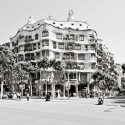
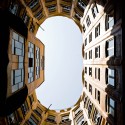
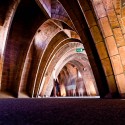
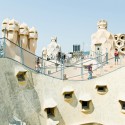
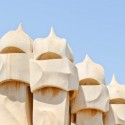
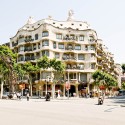
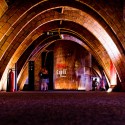
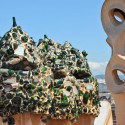
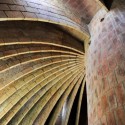
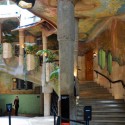

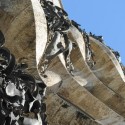
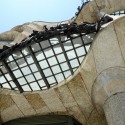
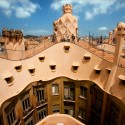
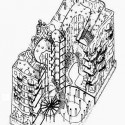
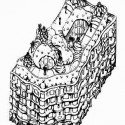
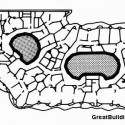
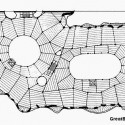
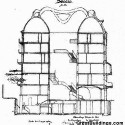
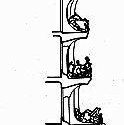
Clásicos de Arquitectura: Casa Milà / Antoni Gaudí originalmente publicado en Plataforma Arquitectura el 16 Jul 2013.
Enviar a Twitter | Compartir en Facebook | ¿Qué opinas del articulo?
The Surprising Health Benefits of Eating Your Own Placenta
The thought of consuming something that’s slipped out of one’s body will probably make most cringe, but there’s a growing trend that finds women eating their own placenta shortly after giving birth. Better known as placentophagy, almost all mammals engage in this act, and for good reason: The placenta contains all sorts of nutrients and hormones that a postpartum mother needs to recover and to nourish her baby after birth, including iron, vitamin B12, oxytocin, prolactin, prostaglandins and endorphins. Celebrities such as January Jones have given the practice a try, and now Inhabitat editor-in-chief Jill Fehrenbacher shares her placenta-eating story. Click ahead for her piece, “I Ate My Placenta and It was Great!”.
READ MORE >
Permalink | Add to del.icio.us | digg
Post tags: eating placenta, I Ate My Placenta and it was great, january jones eats placenta, placenta, placenta consumption, placenta encapsulation, placenta pills
Scientists Think Cavemen Painted While High on Hallucinogenic Drugs
"Jerking off the universe is perhaps what all philosophy, all...

"Jerking off the universe is perhaps what all philosophy, all abstract thought is about: an intense, and not very sociable pleasure, which has to be repeated again and again."
Sontag is amazing.
Strange Yet Awesome Salad Dressing: Mozzarella Foam
I rarely take photos in restaurants, but I had to get this snapshot during one of my lunches in Paris a few weeks ago so I could show you one of the weirder salad dressings I've eaten recently — mozzarella foam!
MoreBazz the Beekeeper’s Dog Sniffs Out Bee Disease in an Adorable Custom Suit
A black labrador named Bazz has joined the global ranks of beekeepers who are fighting to save the world’s pollinators, and he even has an adorable custom suit to protect him on the job. Like Boneco the donkey in Brazil, Bazz does important but dangerous work: his owner, Josh Kennett from Australia, trained him to sniff out American foulbrood disease, an incurable disease that decimates bee populations if not detected early.


Read the rest of Bazz the Beekeeper’s Dog Sniffs Out Bee Disease in an Adorable Custom Suit
Permalink | Add to del.icio.us | digg
Post tags: agriculture, American foulbrood disease, Animals, Bazz the Beekeeper's dog, beekeeper's dog, beekeepers, bees, Environment, News, pollinators, sniffer dog detects bee disease
Things That Don't Exist (But Should) - Part I
*As designer, I take zero responsibility for any act of vengeance your cat may decide to perform after you have used one of these items. Just so we're clear.
(1) A self-adhering towel
Ideal for those pill-giving moments.
As things stand, administering a worming tablet to a cat is a two-person job at a minimum, and at a maximum involves twenty-seven people, two ambulances, a fire engine, haulage equipment and possibly a hearse.
With this simple device (kind of like restraining straps but less scary), your non-compliant feline's limbs can be safely secured in a wriggle-proof sausage while you deal with the business end. It's win-win.
(2) A door-gate that actually has a hope in hell of keeping a cat out of a room
Whoever designs door-gates that are supposedly pet-proof as well as toddler-proof is clearly unfamiliar with the oozing, shape-shifting and generally gravity-defying properties of the average mog. There is nothing on the market that Tail or even Mouth couldn't outfox in two seconds flat.
I guess you might want something a tad more decor-friendly, but you get the idea.
(3) A carrier that you can trick your cat into using
We all know that the main uses of cat carriers are vet trips and house moves, and neither is a particularly persuasive reason for Tiddles to stride cooperatively into the carrier's plasticky depths. Let's face it, no cat is ever going to get in of his own free will.
So we need a way of tricking him.
Maybe it's a carrier that looks nothing like a carrier. (To be truly effective, it would need to change its appearance each time you used it, so some versatility is needed.)
For extra points, make it look as if venturing inside is strictly forbidden.
Or maybe it's cunningly constructed to look like a harmless box. Fluffykins creeps inside, and WHAM! A high-tech lid clamps smoothly over her head at the touch of a remote-control button.
A little extreme, perhaps.
(4) CCTV-operated sofa protection
Covert movement-detecting cameras that guard your sofa's most susceptible parts from errant claws. What's not to love?
(5) A mattress that's the shape you sleep in when you share the bed with a cat
Actually allows two people plus feline enough room to sleep. Brilliant!
Of course, you'd need to introduce a same-sized line in bedding, but I think it would catch on.
Comes with clip-on extensions for those stray arms, legs and tails that still fail to conform.












